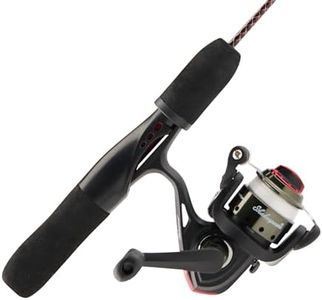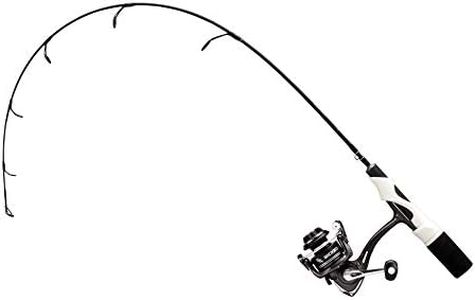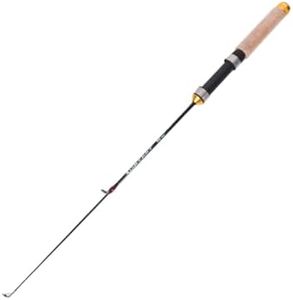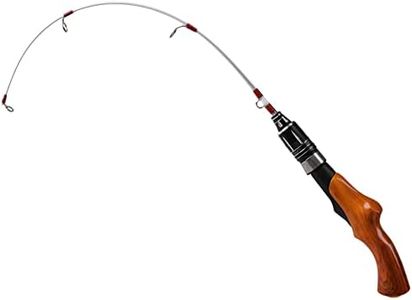We Use CookiesWe use cookies to enhance the security, performance,
functionality and for analytical and promotional activities. By continuing to browse this site you
are agreeing to our privacy policy
10 Best Ice Fishing Rods
From leading brands and best sellers available on the web.By clicking on a link to a third party's website, log data is shared with that third party.
Buying Guide for the Best Ice Fishing Rods
Choosing the right ice fishing rod is essential to have an enjoyable and successful day on the ice. Ice fishing rods are different from regular fishing rods because they are much shorter and designed to be used in cold conditions and often indoors (in an ice shelter). To pick the best rod for yourself, think about what kind of fish you want to catch, your preferred fishing style, and the places you’ll be fishing. Understanding the important features and how to match them to your needs will help you end up with a rod that feels comfortable and works well for your fishing adventures.Rod LengthRod length in ice fishing rods usually ranges from about 18 to 36 inches. This refers to how long the rod is from the handle to the tip, and is important because shorter rods are easier to use in tight spaces like shelters, while longer rods give you more leverage and control when fighting bigger fish. Generally, rods under 24 inches are compact and great for jigging in small spaces or for young anglers. Rods between 24 and 30 inches offer a good balance for most types of ice fishing, suitable for general use. Rods over 30 inches provide extra reach and are better for fighting larger fish. Think about where you’ll be fishing and what size fish you expect; if you're mostly in a small shelter, go shorter, but if you fish outside or target bigger fish, a longer rod may be best.
Rod PowerRod power means how much force it takes to bend the rod, and ranges from ultralight to heavy. This is important because the right power lets you use the proper lures and line for your target fish. Ultralight and light rods bend easily and are best for small fish like panfish or trout. Medium rods are more versatile and can handle a wider range of fish, such as walleye or perch. Heavy rods are stiffer and meant for big species like pike or lake trout. To pick the right power, think about the main fish you plan to catch and choose the power that matches your target’s size and fight.
Rod ActionRod action is about where and how much the rod bends when you put pressure on the tip. Fast action rods bend mostly at the tip and are good for quick hooksets, making them excellent for catching walleye or other fish that bite gently. Medium or moderate action rods bend more toward the middle, which absorbs shock better and helps with larger or active fish. Slow action rods bend throughout the length and are mainly for small fish. The right action depends on your fishing style: fast for sensitive bites or fishing jigs, moderate for more control, and slow for smaller fish and lighter bites.
Handle Material and DesignThe handle of an ice fishing rod can be made from cork, EVA foam, or other materials, and it’s important because it affects comfort and sensitivity, especially in cold weather. Cork handles offer good sensitivity and are traditional, while EVA foam is softer and can insulate your hand from the cold. Some rods also have special ergonomic designs or extended handles for better control. Choose a handle that feels comfortable when you grip it and that suits how you like to hold your rod, especially if you’ll be fishing for long periods.
Guides and Reel SeatGuides are the loops the fishing line passes through, and the reel seat is where the reel attaches to the rod. Both are important for smooth casting and durability in cold conditions. Good quality guides help prevent your line from freezing and breaking, while a solid reel seat keeps your reel secure. Some rods use tape or sliding rings instead of a fixed reel seat for adjustability. If you often fish in very cold or wet weather, look for rods with quality guides that resist ice buildup and a reel seat that feels secure and fits your preferred reel type.

















